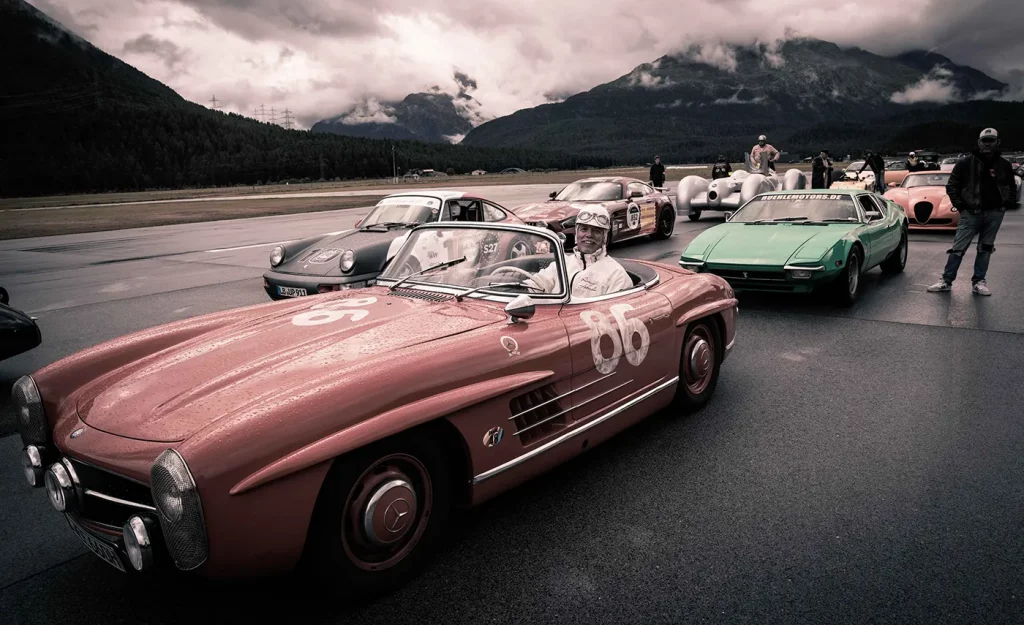
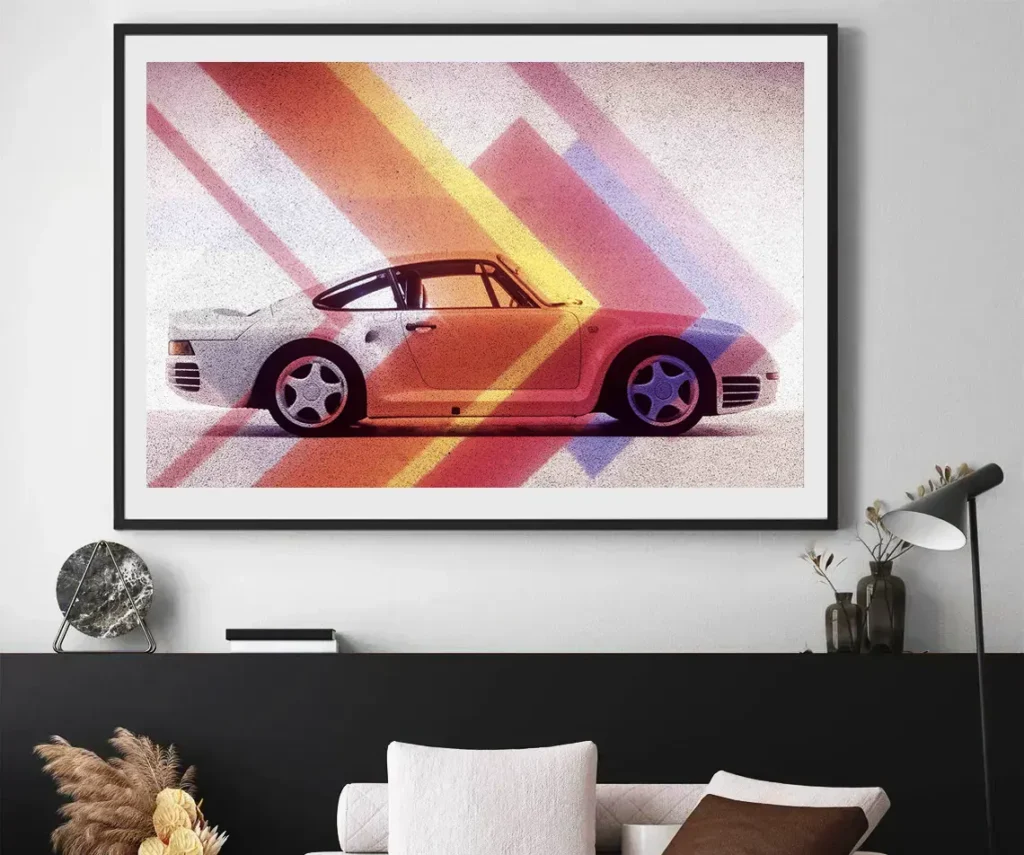
The summer of 2023 marks 75 years of Porsche sportscars. To celebrate this jubilee, I have assembled a car art collection of the most unique images in my car photography portfolio, which now stretches back five decades.
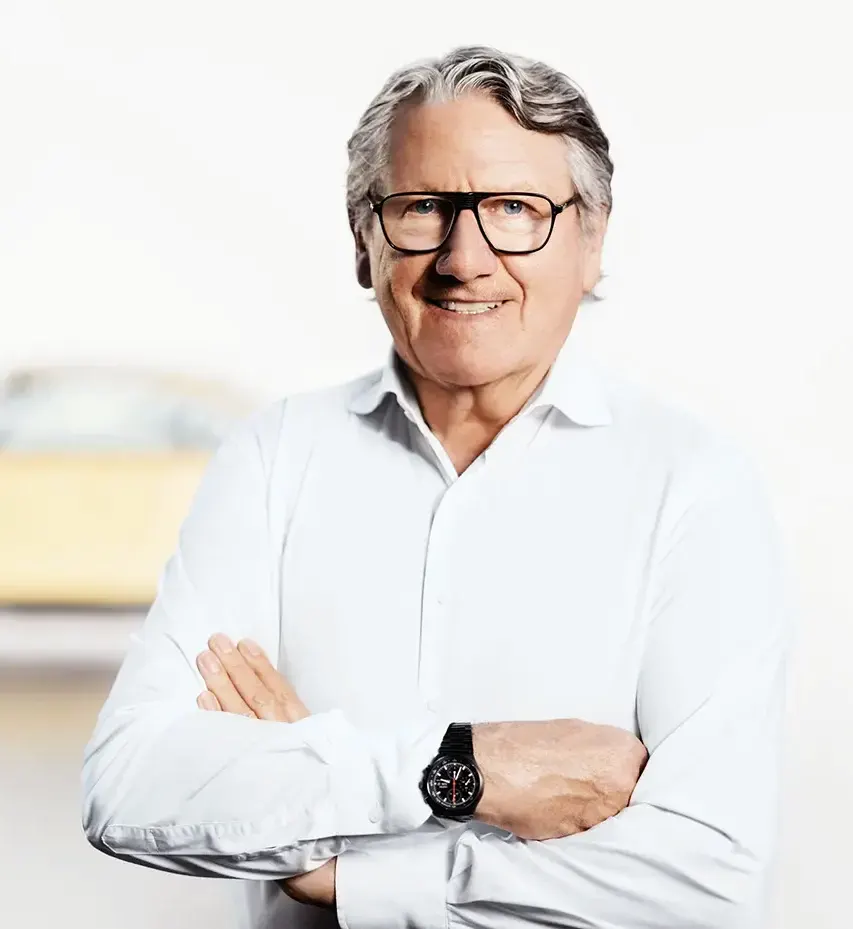
I have hosted countless Porsches in my studio since the early 80s. Whenever I finished shooting an advertising campaign early and was left with some free time on my hands, I would often stage these cars to make fine-art photographs. Manchmal, wenn die Bilder für einen Werbeauftrag fertig waren und noch Zeit für eine freie Arbeit war. Manchmal, wenn ich etwas ausprobiert habe, was sich für die Werbung nicht umsetzen ließ. This gave me the opportunity to try out things that wouldn’t necessarily have worked for the advertising images we had just finished taking.
The black gradient is separated into four printing colors when we scan the chrome film: C is for Cyan, M for Magenta, Y for Yellow, and K for black. The resulting effect is produced by manipulating the individual values for each channel.
Light graffiti in the paint: a 1989 Porsche 911 Cabriolet in front of a color gradient projected using a high-end-beamer
Image processing in the 90s – this is how the “Harlekin” turned out.
A white car on a white background, a pure, simple shot, lit perfectly for an 8×10” sheet of chrome film. Over that we layered filter strips, the kind you use to make little lanterns with your kids, and lastly a layer of airbrushing – all of it then rephotographed in camera.
»The client couldn’t use these images for advertising purposes, but people love them now, because they were created with a real sense of craftsmanship.«
This is what happens when you put a silver car against a dark background and turn every control in your image processing system on its head. We were trying to be economical, so we ganged two tests onto one test print.
A truly one-of-a-kind piece – the idea came to me after a “lab accident” with some Polaroids.
I have photographed – and admired – many of Christo’s installations, but I’ve always regretted that he never wrapped cars. So, this is essentially me appropriating Christo’s idea and interpreting it as a car photographer. I believe this kind of picture only works if you use an iconic car, like this 1982 G-Model Porsche 911. I wouldn’t have wanted to use an Opel Kadett, for example. This picture quickly became a favorite that has graced many people’s walls.
I used embossing foil to make this photograph, like the kind used for cigarette packs. It doesn’t crease the way aluminum does. It’s relatively soft, and it “falls” very nicely, as you can see from the strips hanging in the background.
Here you can see how to put together your own series from the individual images on this page. Please feel free to contact me if you are interested in creating such a curated ensemble. I’d be happy to provide you with any advice and support you may need.
A simulated solarization – it’s fun to see what happens when you shift the colors!
Computer begins with c-o-m because it lets you create so many cool compositions! It’s really heaven for composing images. This is what we came up with as we experimented with the predecessors of today’s Macs and PCs.
What’s good for Campbell soup cans is great for a 911!
The most powerful Porsche was the Turbo, and that’s how it should look: badass and straight outta hell – because hell is exactly what this car gave many a driver at the time!
This image was supposed to be featured in a calendar, but with the Flamenco in competition with the Boxer V6, the advertising director ended up cutting it.
You can do light painting yourself at home. It’s easy!
If you keep your car in your garage, all you have to do is take a fluorescent tube (or any of those light saber toys that kids play with) and wave it behind your car across the image area during a long camera exposure.
We used a regular fluorescent tube here. I was even dancing to “Romeo and Juliet” as I did this!
Why does this generate such an interesting mesh pattern?
It’s because a fluorescent tube flickers. It doesn’t emit continuous power or light. It pulses 50-60 times per second. You can’t see that with the naked eye, but film or an image sensor does.
Changing a car’s paint color first became possible with the introduction of Photoshop. And that’s how yesterday’s tests have become today’s artworks!
Test chromes from the 1990s: what happens to the paint color when we start messing with the contrast and color gradients? This was the start of our image processing experiments using the Kodak Premiere image processing system.
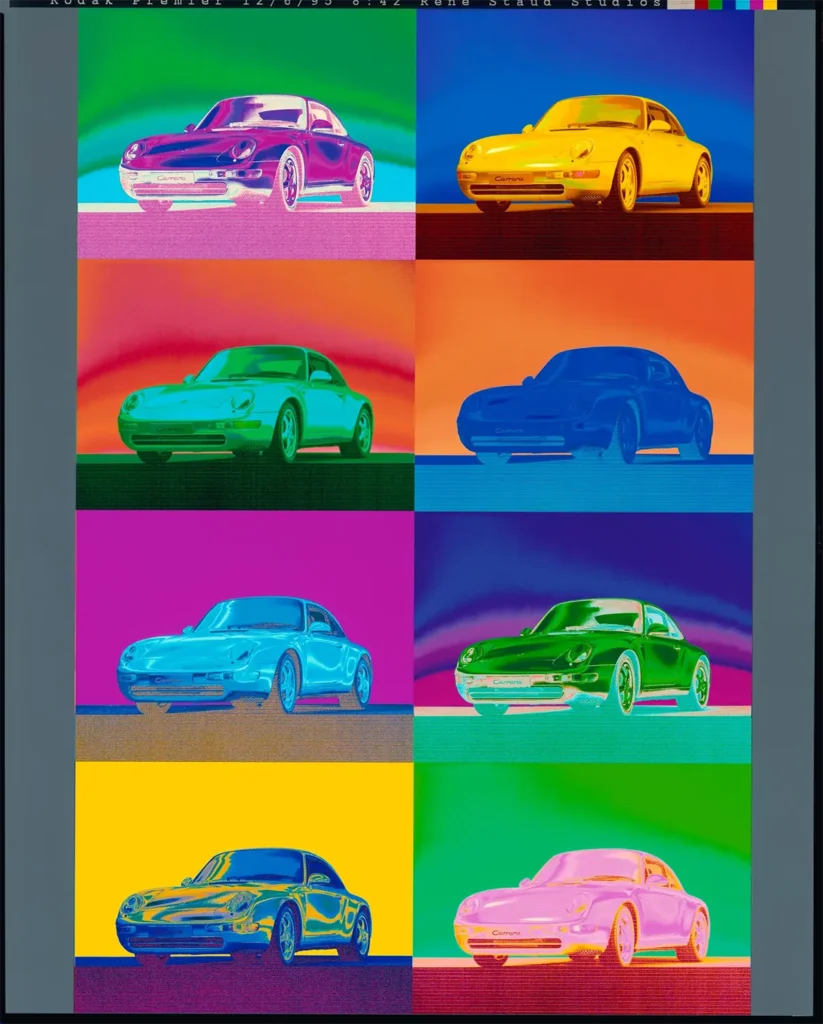
Homage to Andy Warhol, or rather, what’s going on here? Warhol experimented with print colors, while we changed the colors in the computer, which you can do in car photography. Just a test chrome, or is it art?!
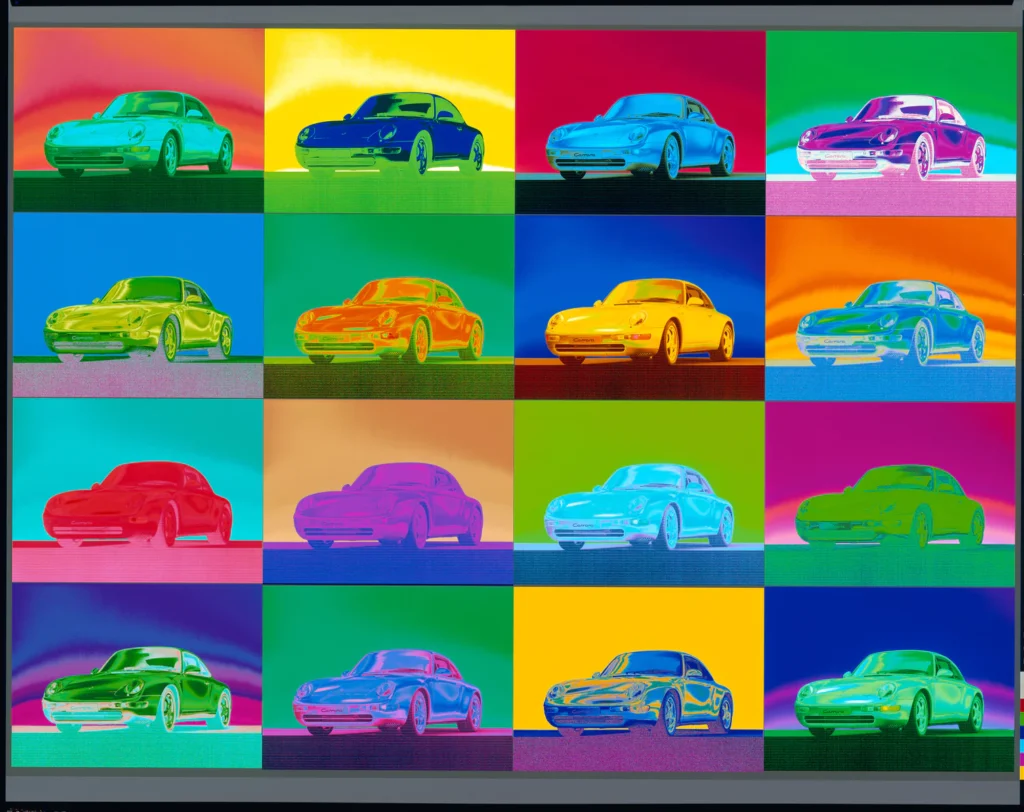
9, 12, or even 16 manipulations of the original chrome film – the artistic effect is astonishing.
»These old, handcrafted images, combined with current printing and scanner technologies, yield a totally different depth and sharpness. It just amazes me.«

WOULD YOU LIKE TO KNOW MORE? SIGN UP FOR MY EMAILS!
Now that I am less involved with the day-to-day operations at Staud Studios, I finally have time for all my projects: books, exhibitions, presentations, and more. Sign up here for my monthly emails about what I’m working on now.